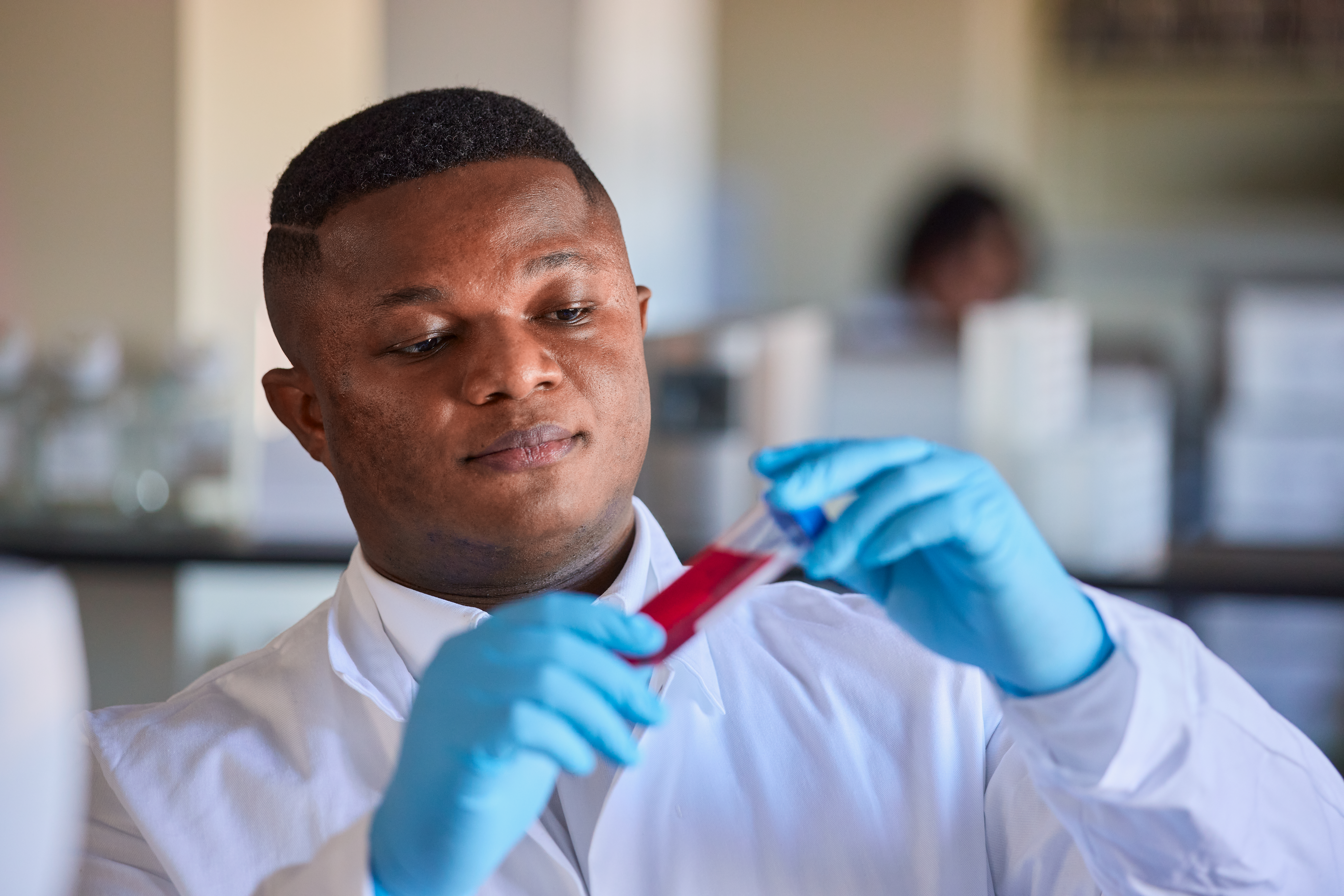 Photography by Joshua Franzos
Photography by Joshua Franzos
One day during his childhood in Ghana, Thomas Karikari was helping with his family farm when he saw his father observing him. Karikari recalls his father telling him, “I understand you’re very good in school. Take that seriously because you’re not very good at farm work.”
He heeded his father’s advice. However, despite his obvious intelligence, Karikari faced obstacles in his education. School resources were scarce in his small country town, and when one of his middle school teachers left and was not replaced, Karikari and his classmates decided to teach themselves. They prepared each other for nationwide exams that determined acceptance to high school, and Karikari’s exam scores—still an unmatched record for his middle school—earned him a spot in one of the top high schools. He then went on to receive an undergraduate honors degree in biochemistry, master’s degree in biotechnology and a PhD in neuroscience. After fellowships at Harvard Medical School and University of Gothenburg and also an assistant professorship at the latter, Karikari joined the University of Pittsburgh School of Medicine as an assistant professor of psychiatry.
“I see challenges and try to jump beyond the challenges—jump like I want to achieve it, no matter what,” he says.
Karikari’s early introduction to overcoming obstacles led him to take on a new challenge—studying Alzheimer’s disease. After learning that there is no quick and easy diagnostic test for the disease, Karikari asked why and then went to work. MRI-based imaging and cerebrospinal fluid tests can diagnose the disease but often only after the brain is damaged and clinical symptoms emerge. They are expensive without insurance, use infrastructure that is limited to major hospitals, and can have long waiting lists, so accessibility is also an issue. He needed to find an easier, quicker diagnostic tool, which might help patients access treatments earlier.
On Friday, June 13, Karikari will present “Blood Biomarkers for Alzheimer’s Disease” as part of the 2025 Senior Vice Chancellor Research Seminar series. (Join the lecture here.)
“What really gives me a kick is when we say, OK, we want to do this. We don't know how to do it. Could we try and figure it out,” he says. “Let’s put pure science to work, where we formulate a hypothesis, test it in different ways, interpret the data and change the approach as needed. Of course, we fail a lot of times because that’s how the game is supposed to be.”
This methodical approach worked. The Alzheimer’s Association uses a framework of three points when diagnosing the disease—tau tangles, amyloid-beta plaque deposits and neurodegeneration. Because the presence of amyloid-beta deposits does not always lead to Alzheimer’s disease, Karikari and his team looked at tau, a normal brain protein that becomes abnormal when it clumps and causes healthy brain cells to die. They found that specific forms of tau can be detected in blood plasma using a biomarker test as long as a decade before it would appear on an MRI, which could lead to earlier diagnosis and treatment. Since then, Karikari’s team has innovated several blood biomarker methods and tools targeting not only tau but other pathological entities in Alzheimer’s disease and related diseases, including amyloid beta. Pitt has patented several of these inventions, with many others in development. In mid-May 2025, the Food and Drug Administration approved the first blood test for Alzheimer’s disease which measures the ratio of specific modified forms of tau protein (p-tau217) and the amyloid beta peptide (Aβ1-42) to a commercial entity. These are two key pathological entities for which the Karikari group has built blood tests.
Karikari has not been content to stop with quicker diagnostic tests. He considers the science, the translation of science into a tool and then the application of that tool on an individual level. He has considered how accurate the tests are, the ethics of providing blood test results without proper clinical support and how accessible tests are to everyone.
“We’re not just developing tools for the sake of doing it for science,” he says. “All of these [tests] we’re creating are great, but these tools should reach all people who would benefit. Until they reach the people in the village where I grew up, the tool has failed.”
